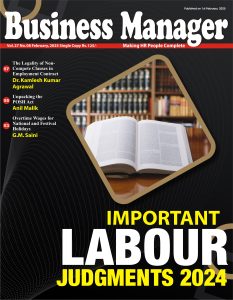As technology becomes increasingly integrated into our work lives, we face a critical question: Is it leading to digital overload or providing a much-needed detox? This dilemma isn’t just about the tools we use; it’s about how these tools shape our daily work experiences, productivity, and overall job satisfaction. Recent studies highlight that the relationship between technology and employee well-being is far more complex than a simple binary of good or bad.
A 2023 report from the Harvard Business Review sheds light on one side of this equation, revealing that a staggering 70% of employees feel overwhelmed by the constant influx of emails, messages, and notifications. This phenomenon, often referred to as “digital overload,” is becoming a significant issue in workplaces around the globe. The very tools designed to enhance our efficiency and keep us connected are, paradoxically, creating an environment where distractions are constant, and the ability to focus is diminishing.
Technology can be an efficient enabler in the workplace. For instance, automation of repetitive tasks is one of the primary ways technology can alleviate the workload. By taking over mundane and time-consuming activities, technology can free up employees’ time, allowing them to focus on more meaningful and intellectually stimulating tasks. This not only boosts productivity but also contributes to a greater sense of accomplishment and job satisfaction. Moreover, flexible tools that support remote work and collaboration can help employees maintain a better work-life balance, further enhancing their overall well-being.
Investing in user-friendly technology is another critical factor. Tools that are intuitive and easy to use can significantly reduce the cognitive load on employees, making their work experience smoother and more enjoyable. When employees aren’t burdened by complex or inefficient systems, they can work more efficiently and experience greater satisfaction. This, in turn, can lead to higher productivity and a more positive work environment.
Also read – Foster a Culture of Transparency and Trust by Kartik Iyer
This perspective suggests that technology isn’t inherently a source of stress; rather, its impact depends on how it is managed. When organisations prioritise thoughtful implementation, they can turn potential technological challenges into opportunities for growth and development. However, this requires a deliberate and strategic approach.
Creating a culture that supports digital well-being is equally important. This includes encouraging employees to take regular breaks from screens, offering resources to manage digital stress, and fostering an environment where mental health is prioritised. For instance, providing access to mindfulness programs or digital detox workshops. A digital detox can be achieved through purposeful browsing and by engaging in intentional online activities. Start by turning off non-essential notifications, unsubscribing from unnecessary email lists, and leaving unproductive group chats to declutter your digital life and reduce information overload. Curate your social media feeds, set usage limits, and avoid passive consumption. If you feel overwhelmed, seek support and talk about it. Remember, technology should be a tool you control, not something that controls you. This can help employees develop healthier relationships with technology.
Moreover, recognizing the human side of technology is crucial. While digital tools can enhance efficiency, they should not replace the human interactions that are vital for a healthy workplace culture. Encouraging face-to-face communication, even in a digital age, can help maintain a sense of connection and community among employees, which is essential for their overall well-being.
It’s crucial for companies to regularly assess their technology usage. Instead of relying on numerous tools, they should prioritise a single, seamlessly integrated platform. As new tools and trends emerge, regularly checking in with employees about their experiences can provide valuable insights into how technology is affecting their work and well-being. This feedback should be used to make informed adjustments, ensuring that technology continues to serve as a helpful asset rather than becoming a source of stress.
For instance, regular surveys or feedback sessions can help organisations identify areas where technology might be contributing to overload or where it’s being underutilised. By making data-driven decisions, companies can fine-tune their technology use, ensuring it aligns with their goals for productivity and employee satisfaction.
Thus, the impact of technology on work productivity and employee happiness is multifaceted. It’s not just about the tools themselves, but how they are integrated into the workplace and the culture surrounding their use. By setting clear boundaries for communication, investing in user-friendly tools, supporting digital well-being, and continually evaluating technology use, organisations can harness the power of technology to enhance productivity and create a better work environment.
The key is finding the right balance between the benefits of technological advancements and the potential pitfalls of digital overload. With a thoughtful approach, companies can turn the challenges of the digital age into opportunities for growth, innovation, and enhanced employee well-being. The ultimate goal is to use technology in ways that not only boost productivity but also contribute to a happier, healthier, and more balanced work life.
Stay connected with us on social media platforms for instant updates click here to join our LinkedIn, Twitter & Facebook



















